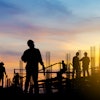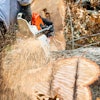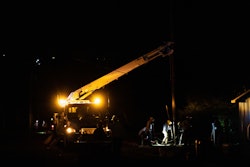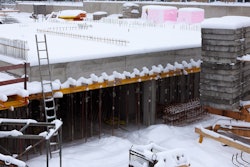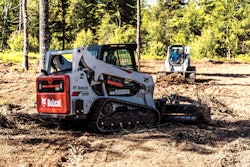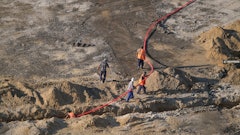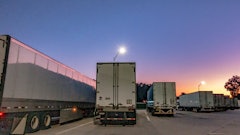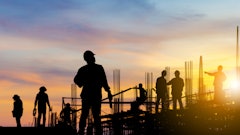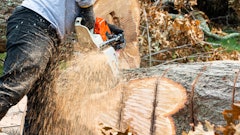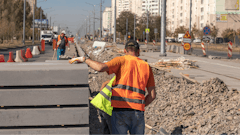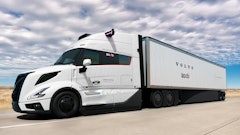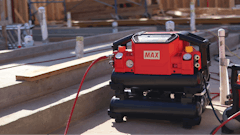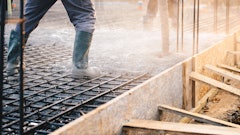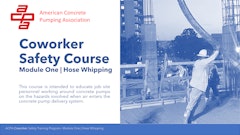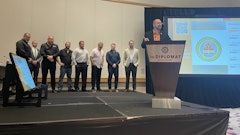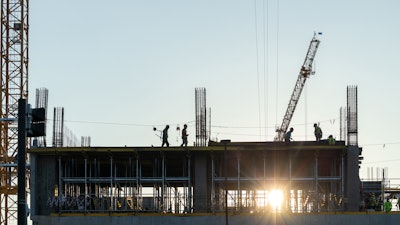
As we can see from the modern construction site, safety and productivity are among the most valuable assets. Indications of the dynamic nature and size of contemporary construction projects suggest that effective safety procedures are extremely important to safeguard the lives of construction workers, owners, and property. Of the listed measures, interior protective systems can be highlighted as critical tools for making construction-friendly zones of work. These systems, covering everything from protection from the surface of an appointment up to control of the air quality, are in fact, guaranteeing physical assets and at the same time, greatly improving the safety and thus the productivity of workers.
Understanding Interior Protective Systems
Interior protective systems can be defined as a number of products or a set of measures intended to protect different parts of a construction site from harm and contamination. They consist of measures for safeguarding contents and interim measures for floors, walls, fixtures, and other interior surfaces for dust control and air quality control. These measures are important for minimizing the costs of potential damages, keeping to standard industry safety regulatory measures, and creating a clean and safe working space.
Types of interior protective systems include:
Surface Protection. This has to do with employing products such as films, boards and sheets which ensure floorings, walls, counter tops and other areas are protected against damage. These materials protect the surfaces from scratch, dent and stainages which may occur from the various construction activities undertaken. Common products include:
- Adhesive Films: Transparent or translucent high polished films to shield surfaces from scratches or abrasion, dust, dirt, or light knocks.
- Corrugated Plastic Sheets: A long-lasting, and transportable protection from floors and walls protect from staking heavy traffic or equipment.
- Masonite Boards: It is a range of hardboard panels suitable to provide protection on areas like floor and other flat surfaces that require stern usage.
Dust Containment Systems. In dust management, it is important to control the generation, transportation, and deposition of dust and other debris in order not to affect the quality of air that surrounds various equipment and materials. Effective dust containment systems include:
- Zip Walls: Temporary, adjustable barriers that create isolated zones within a construction site to contain dust.
- Negative Air Machines: Aerosols containing facilities that help in removing the contaminated air from the working environment and providing cleaner air.
- Air Scrubbers: Stationary equipment that actively purifies the air by removing dust particles and in so doing, enhancing the quality of air within the premises.
Safety Barriers and Edge Protection. Additionally, safety barriers and edge protection systems are provided around the site in order to minimize falling and / or getting injured. These include:
- Guardrails: Temporary or permanent railings that prevent falls from elevated work areas in commercial and residential buildings.
- Toe Boards: The guards themselves have ends that act as an anchor to stop tools and materials from falling over edges at the base of the guardrails.
- Netting Systems: Suspended sheaths with openings that can prevent drops and falling tools and parts in order to prevent injury on those working on the structure as well as passers-by on the ground.
 @detakstudio - stock.adobe.com
@detakstudio - stock.adobe.com
Safety Equipment
Ensuring safety on construction sites is a multifaceted challenge that requires comprehensive measures to protect workers from various hazards. The use of appropriate safety equipment is crucial in mitigating risks and maintaining a secure working environment. This guide explores the essential safety equipment commonly used on construction sites, providing detailed insights into their functions and importance.
From a general perspective, personal protective equipment (PPE) is the first method of protecting oneself from the numerous risks that are evident in the workplace. It consists of some gears that are intended to provide protection to different body parts against possible harm. Hard hats are critical in providing the necessary shielding to the head area from impacts of falling items, impacts with fixed immovable objects, or electrical dangers. They are made of hard wearing fabrics and they accompany features like; flip up sun visors and foldable ear muffler.
Eye and face protection like safety goggles protect the eyes from objects which may fall around, dust and any chemical splash. They are impact resistant and might incorporate anti-fog and UV protection coatings. Face shields offer enhanced coverage for the face in applications involving chemical splash, hot spark, and flying particles. They can be worn together with safety glasses or goggles, usually depending on the need of the intervention.
Construction zones are among the noisiest environments and noise levels could easily surpass prescribed thresholds at many sites. Both earplugs and earmuffs serve to safeguard the hearing of employees given that they help to reduce exposure to noisy surroundings.
Dust masks and respirators are used to minimize the amount of unhealthful dust, fumes or gasses which might circulate in the working environment and which a worker might inhale. Generally speaking, dust masks are useful for low-risk situations while more properly fitting respirators offer better protection against hazardous materials.
Depending on the nature of the work to be done or where the person will be using them, various gloves are worn. For instance, heavy-duty products, such as leather gloves, may afford cut and abrasion resistance whereas rubber gloves give protection from chemicals. Anti-static shoes protect from dangers that may be associated with electrical shocks while working in the vicinity of the sources of electricity. It also comes in slip-resistant soles to increase the firmness of points on the ground type of surfaces.
Hi-vis vests, jackets, and pants for workers maximize the easy visibility of workers within work environments particularly in the dark, hence preventing accidental cases from happening. Coveralls and bib overalls offer shielding against dust, chemical, and any other form of vices that may be hazardous. Administrators can select fire-safe configurations to be incorporated into highly combustible areas.
Along with gloves and other protective equipment products, good sanitation measures are vital for ensuring a safe construction site.
- Basic initial response should have access to a basic first aid kit with important items within proximity. These are some equipment that should be in first aid boxes to treat mild injuries and stabilize critical injuries until professionals attend to the cases.
- Fire extinguishers should be placed strategically and should be of different classes of fire to be able to tackle a specific fire e.g. electrical or chemical.
- Emergency eyewash stations allow washout of the eyes as soon as possible in the event of contamination with undesirable substances.
- Ground fault circuit interrupters (GFCIs) protect electrical sources by turning off electricity supplies when it recognizes a loss of balance.
- Lockout/tagout systems ensure that the flow of operation through a certain apparatus or system ceases, with the corresponding negation of operation or start-up as soon as the maintenance or repair of the machinery is under progress.
- Warning signs and lanterns showing hazards, requiring PPE, and showing the correct emergency procedures are crucial throughout the business to help the workers and visitors.
- Barriers and cones that turning off passageways and flooring help in controlling access to certain areas; people cannot just accidentally wander into that area and get exposed to certain risks.
Benefits & Importance of Interior Protective Systems
Installing interior protective systems at construction sites contains an abundance of features that positively influence the outcomes of a project.
Enhanced Worker Safety. When it comes to selecting a protective system, then safety of workers is the most important criteria for any protective system. These systems play a huge role in reducing such risks as dust, falling objects, and other areas with high risk, such as edges, hence minimizing, if not eradicated, accidents and other related cases.
Preservation of Property. Some of them are: Measuring and improving durability helps to cut down on expenses for replacing or repairing damaged surfaces and finishes. This preservation is particularly useful in cases where there are existing structures in buildings that need to be retained in any renovation activity.
Compliance with Regulations. Places like construction sites have health and safety standards that are kept to the highest possible level. Interior protective systems are important to implement because they will protect workers from fines and any other legal complications arising from failure to meet the OSHA standards and other standards that apply to a particular workplace.
Increased Productivity. A clean and well-organized work environment improves productivity among workers. A cluttered and disorganized work environment reduces a worker’s productivity. Cleaner environment results in less time spent on cleaning and lower levels, thus increasing the efficiency on major construction purposes. Also, protected surfaces help to avoid significant overlaps when one phase changes from another, thus saving time.
Client Satisfaction. This is because clients are more likely to be pleased with any project that meets the timeline, cost estimates, and it hasn’t affected their property in any ways. Since protection and safety is something dear to everyone, more clients will be convinced to avail the service offered by your firm, thus more clients will return for more services and probably recommend others to follow suit.
Implementing Interior Protective Systems
Protective systems that exist inside structures are complex structures, and their implementation is usually a capital-intensive process that needs proper planning and execution. Consider these key steps:
Assessment and Planning. We start off by evaluating the site to look for gaps that may need protection. Therefore, it is recommended to provide detailed recommendations on the materials and systems necessary for the project, having considered the peculiarities of this or that job.
Selection of Materials. The second step is to offer high-quality and long-lasting materials that will be more appropriate for the site. This includes concepts such as the nature of construction processes, materials, and project length or period.
Installation. Accuracy in the installation of protective systems is important, because the further outcome depends on this. In particular, make sure that all the materials are installed reasonably well in compliance with the requirements of the specific manufacturers and the industry standards. Thus, it's necessary to check whether the protections are still invulnerable and prevailing in the course of doing the project.
Maintenance and Monitoring. Conduct periodic inspections, surveillance, and checking on the site to ensure that protective systems are adequately operant. To continue to keep the protections effective, any situation in which the materials become worn or destroyed should be replaced or fixed without delay.
Training and Awareness. Ensure that all the workers understand the concepts of interior protective systems and their correct application. It also suggests that it would be beneficial for key personnel to complete training sessions at least once a month in order to reinforce the best practice and guarantee their adherence to the same.
Interior protective systems are essential in construction projects that want to meet modern standards. Cost control personnel are vital since they protect workers from physical harm and property damage and guarantee the right tempo as well as direction when completing projects. Thus, by frequently applying these systems, construction companies properly manage concerns of safety and efficiency as well as ensure a proper image of the company’s competence. With the increasing changes in the construction business, the requirement for sound interior protected procedures will enhance; therefore, it is an important place to have in any construction suited for work.


